Clear PETG is perfect for printing translucent objects like lampshades or vases. Read on for the best options for clear PETG filament!
Full Transparency
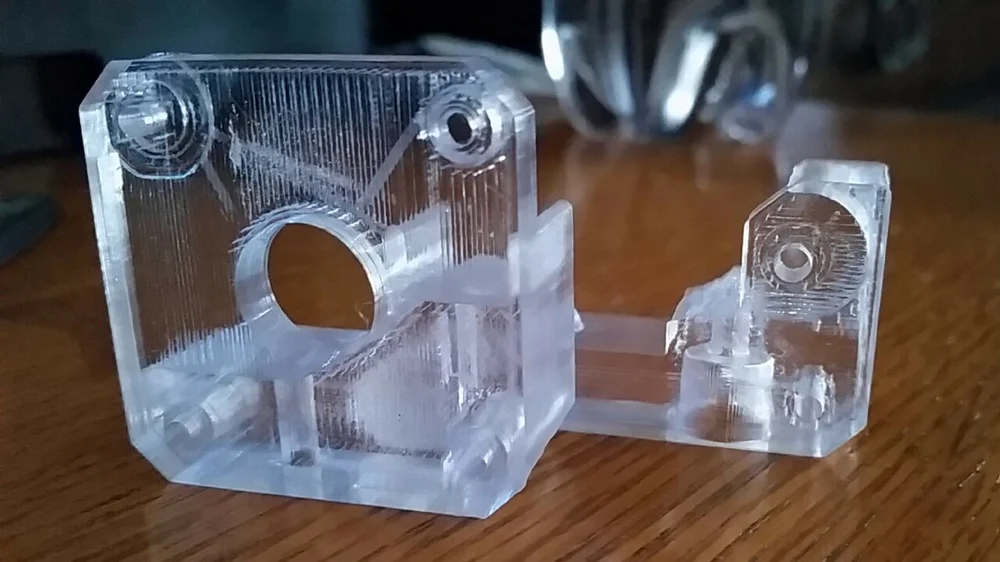
3D printing filaments come in many different colors and finishes, and one of the most interesting options is the color (or lack thereof) clear. Clear filament is unique because it enables you to print transparent objects, which can be used for objects that benefit from light or color passing through, like lampshades and flower vases.
It’s important to mention that, although commonly advertised as yielding transparent objects, clear filaments produce parts that are really more translucent than transparent. That’s because 3D printers print parts layer-by-layer, and those layer lines obscure the part’s transparency. So, even if a filament is completely see-through, objects printed in that filament still won’t be completely clear.
Depending on the brand and base material, certain clear filaments are more transparent than others. For example, a clear PETG filament is typically much more see-through than a clear PLA filament. Transparent PETG filaments yield some of the clearest prints compared to other 3D printing materials, so if you’re after true transparency, you’re in the right place!
In this article, we’ll be going over the best brands of clear PETG filament, reviewing each filament’s specs and features. Before we get into the brands, though, we’ll also go over the general properties of PETG as a 3D printing material.
What Is PETG?
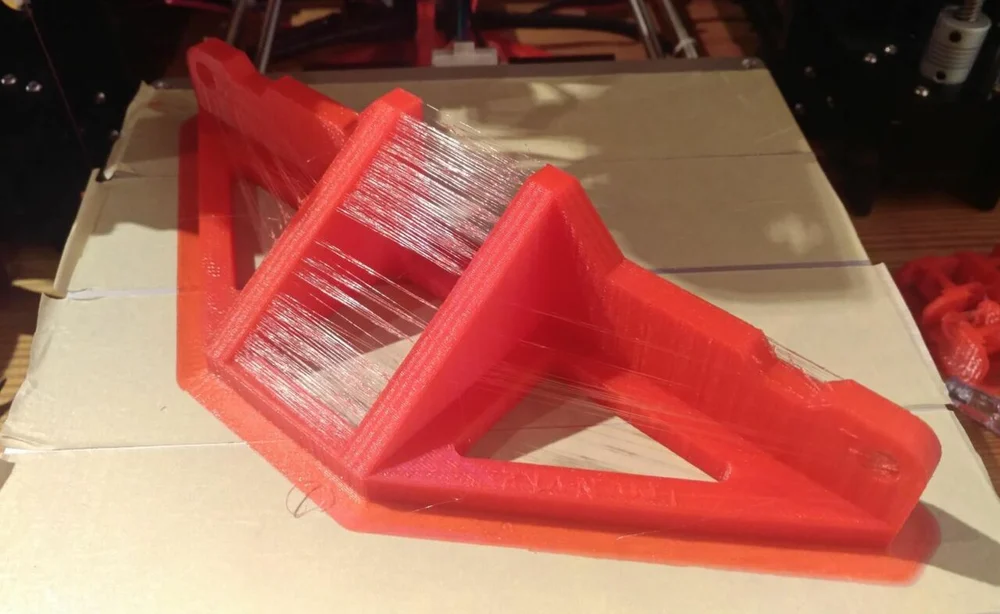
Polyethylene terephthalate glycol-modified, known as PETG, is a modified version of the plastic PET found in many everyday products, like water bottles. The glycol modification in PETG makes it a little more flexible and impact-resistant. As such, PETG is more common as a 3D printing filament than PET.
PETG is often looked at as a new and improved ABS in terms of 3D printing because it provides the strength and durability of ABS without the printing difficulties or hardware requirements, like the need for an enclosure. In fact, PETG is well known for its ease of use and isn’t much harder to print than PLA, the current king of 3D printing materials. PETG requires a hot end temperature between 220 and 265 °C and a bed temperature of 70 to 80 °C, which is great because most 3D printers can reach these values.
Although PETG is usually easier to print than ABS and isn’t as sensitive to air drafts or temperature changes, it’s still a moderately difficult material to print. That’s because PETG tends to string a lot on parts because of how much it sticks to the nozzle and oozes. Moreover, many users also experience too much bed adhesion with PETG, with some claiming that PETG prints took chunks of glass from the build plate when removed.
PETG is also a relatively hygroscopic material compared to other 3D printing materials, meaning it absorbs moisture pretty easily. When 3D printing filaments absorb moisture, the filament degrades and yields lower-quality prints. For this reason, it’s crucial that you properly store your filament away from all moisture.
As clear is simply a specific color of PETG filament, so there shouldn’t be any drastic differences between how you print it and other PETG filaments. However, if you want to achieve the most transparent parts, you should use a lower infill density and a larger layer height, reducing the amount of visual obstruction.
Lastly, even if you’ve printed PETG before, it’s always a good idea to start by printing a temperature tower because different brands and even colors tend to like slightly different temperatures. For example, black PLA filaments typically need a higher nozzle temperature, most likely due to specific additives used to give the material its color.
Now, let’s get to the brands!
Polymaker
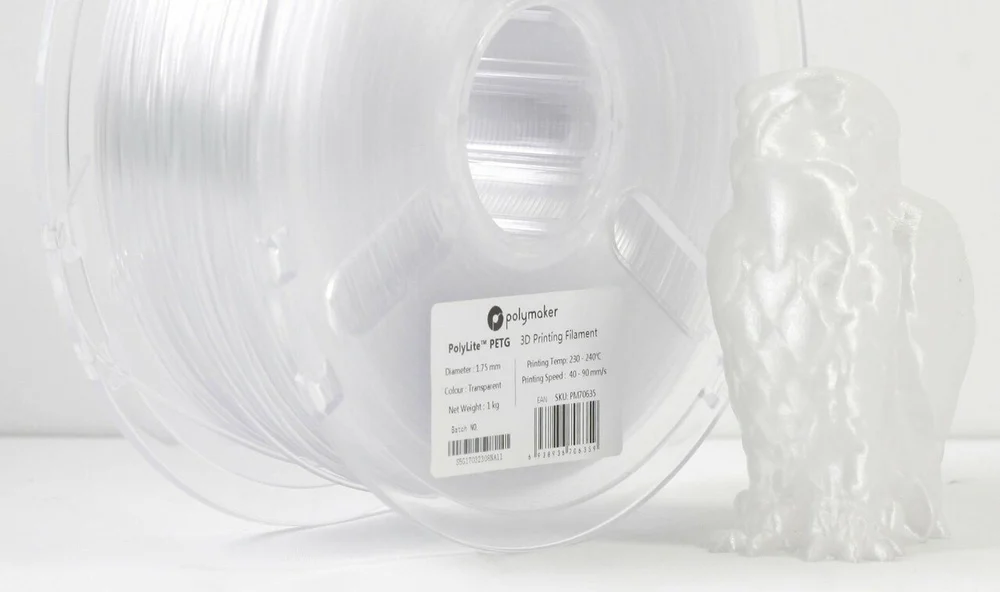
Our first option for clear PETG filament comes from Polymaker, a popular manufacturer of various 3D printing filaments in different colors and materials. PolyLite PETG comes in a transparent colorway, and Polymaker boasts how this filament has great mechanical properties while being easy to use.
Reviewers on Amazon noted how this filament, like most PETG materials, is very hygroscopic, and any absorbed moisture has drastic effects on print quality. For this reason, it’s probably best to have a sealed bag or special filament storage container to keep this filament enclosed in, even when you’re printing with it. Besides being hygroscopic, PolyLite PETG is known for its amazing ease of use and toughness.
- Price per spool: ~$25
- Diameters: 1.75 mm, 2.85 mm
- Nozzle temperature: 230-240 °C
- Bed temperature: 70-80 °C

Second, MatterHackers, a widely known developer and distributor of 3D printing supplies, offers their own clear PETG filament. Their “clear translucent” MH Build Series PETG is probably closer to translucent than clear, but this is in line with most “clear” PETG filaments. This option is pretty inexpensive compared to some others on this list but still yields impressive prints and has many great properties.
Like all MH Build Series PETG filaments, the translucent PETG has a diameter tolerance of +/- 0.05 mm, which is pretty decent. According to MatterHackers, this filament also doesn’t warp or smell when printed; however, they recommend using tape on your build surface to prevent over-adhesion.
- Price per spool: ~$25
- Diameters: 1.75 mm, 2.85 mm
- Nozzle temperature: 235-255 °C
- Bed temperature: 50-70 °C
Prusa Research

Prusa Research is a well-known company in the 3D printing industry, known for their creation of the Original Prusa i3 as well as their line of high-quality filaments, known as Prusament.
Prusament clear PETG filament is another great see-through filament, and Prusa boasts how their filament manufacturing methods ensure high-quality filament in every spool.
With a diameter tolerance of just +/- 0.02 mm, it’s clear that this filament is well made, and Prusa offers a host of resources for improving your prints. For example, they suggest that their PETG filament is easy to sand, which should definitely help with any optional post-processing you want to do.
- Price per spool: ~$30
- Diameter: 1.75 mm
- Nozzle temperature: 250 °C
- Bed temperature: 70-90 °C
Overture
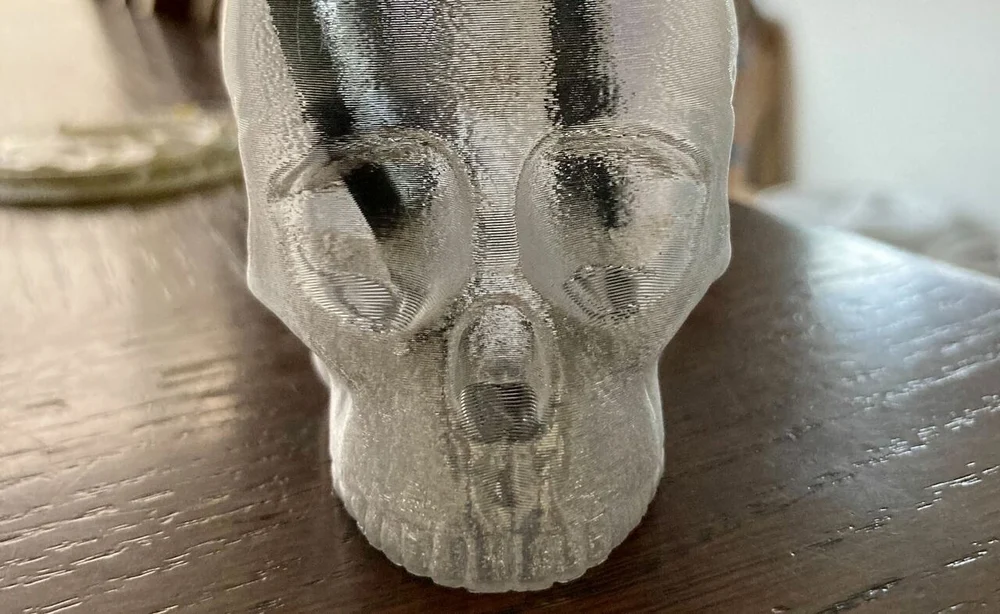
Overture is another popular manufacturer of 3D printing filament, and their clear PETG filament is a great option, especially if you’re trying to save money. Overture’s PETG is very clear rather than translucent or milky, and an image of a successful print by an Amazon reviewer proves this.
Although the filament’s tolerance of +/- 0.05 is pretty average, Overture clear PETG filament makes up for it with its patented clog-free manufacturing process. Acknowledging that PETG tends to absorb moisture, Overture states that they dry every filament spool for 24 hours to rid it of any accumulated moisture and make printing a breeze. Following suit with the company’s ease-of-use claims, many customers have commented on how easy it is to print this filament.
- Price per spool: ~$20
- Diameter: 1.75 mm
- Nozzle temperature: 230-250 °C
- Bed temperature: 80-90 °C
Filaments.ca
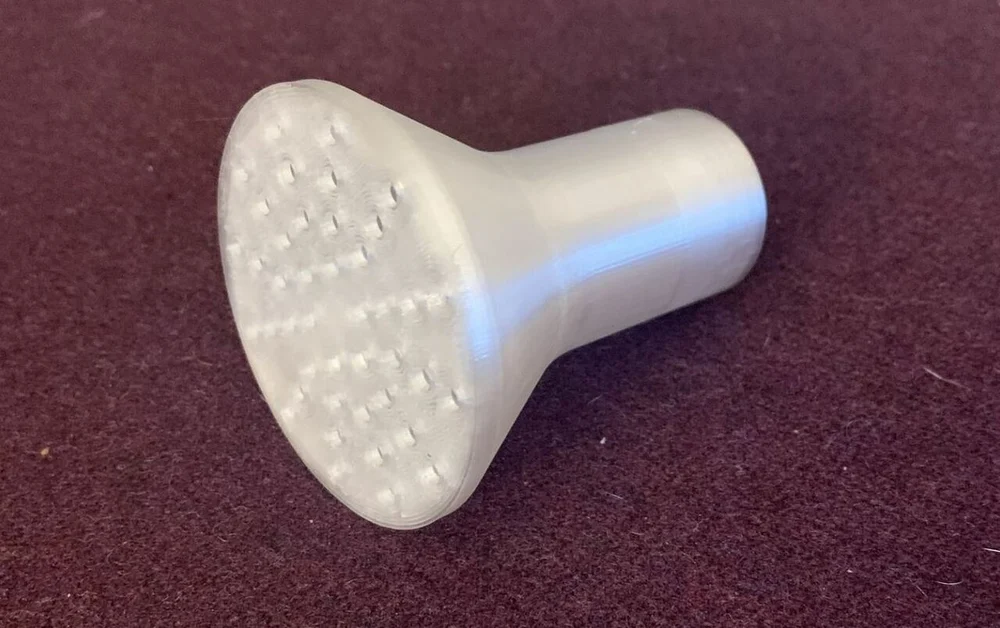
Lastly, Filaments.ca (“.ca” refers to Canada) is yet another popular manufacturer of 3D printing filaments in different materials, colors, and sizes. Filaments.ca’s Transparent PETG filament is a great option, but prints tend to come out more translucent or milky than clear. However, in the reviews, users have noted that this filament still works great for light fixtures (light can pass through it), and the filament yields an attractive glossy finish.
Furthermore, Filaments.ca’s Transparent PETG is very strong, and, according to the manufacturer, the filament was made using a non-brittle formula with 100% Grade A raw materials. A few users have also observed how easy and consistent this filament prints, further supporting the high-quality level of this filament.
Finally, the company also claims that this filament is food-contact safe. However, if you plan on printing food-contact objects, we recommend checking out our guide to food-safe printing.
- Price per spool: ~$20
- Diameters: 1.75 mm, 2.85 mm
- Nozzle temperature: 230-260 °C
- Bed temperature: 60 °C